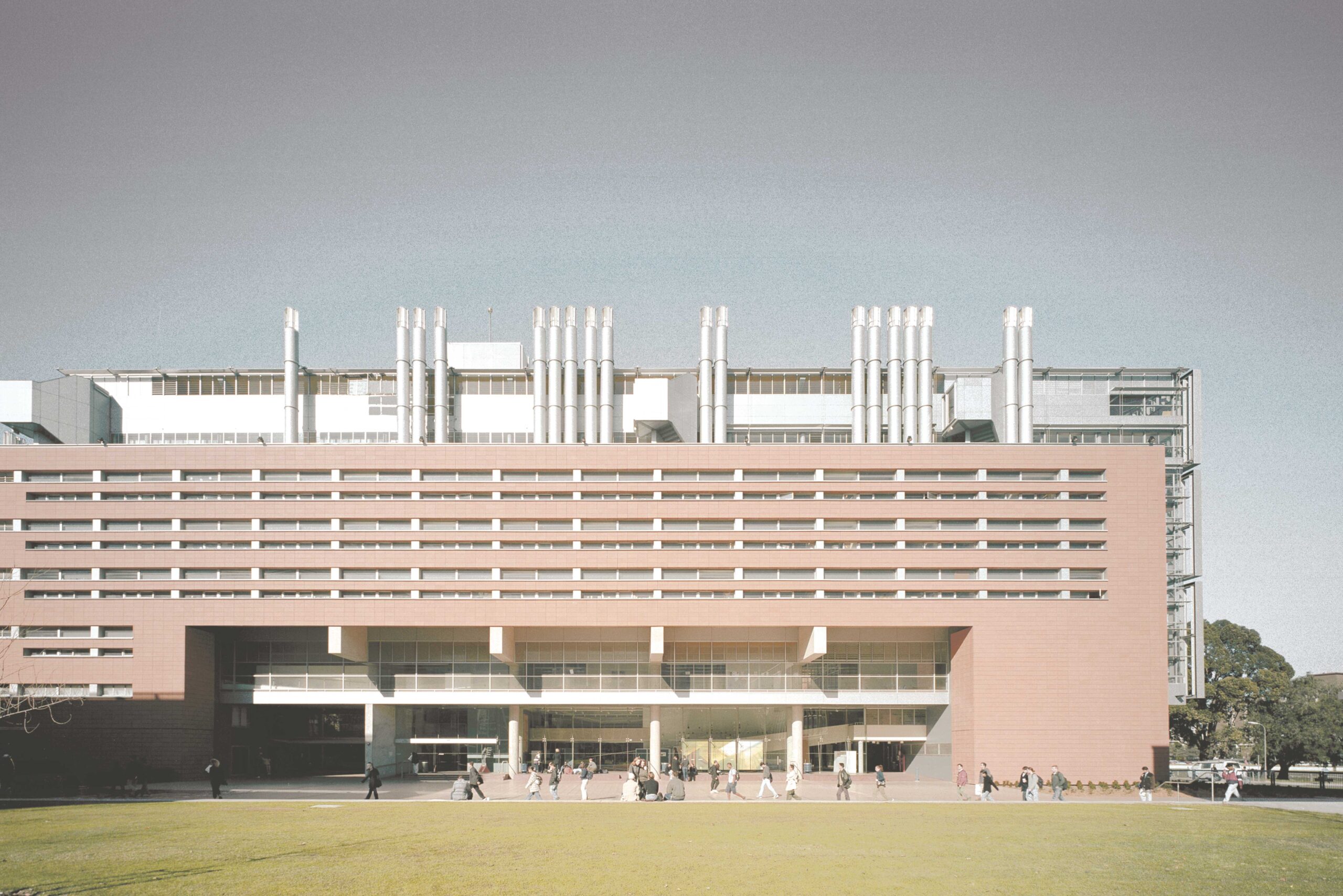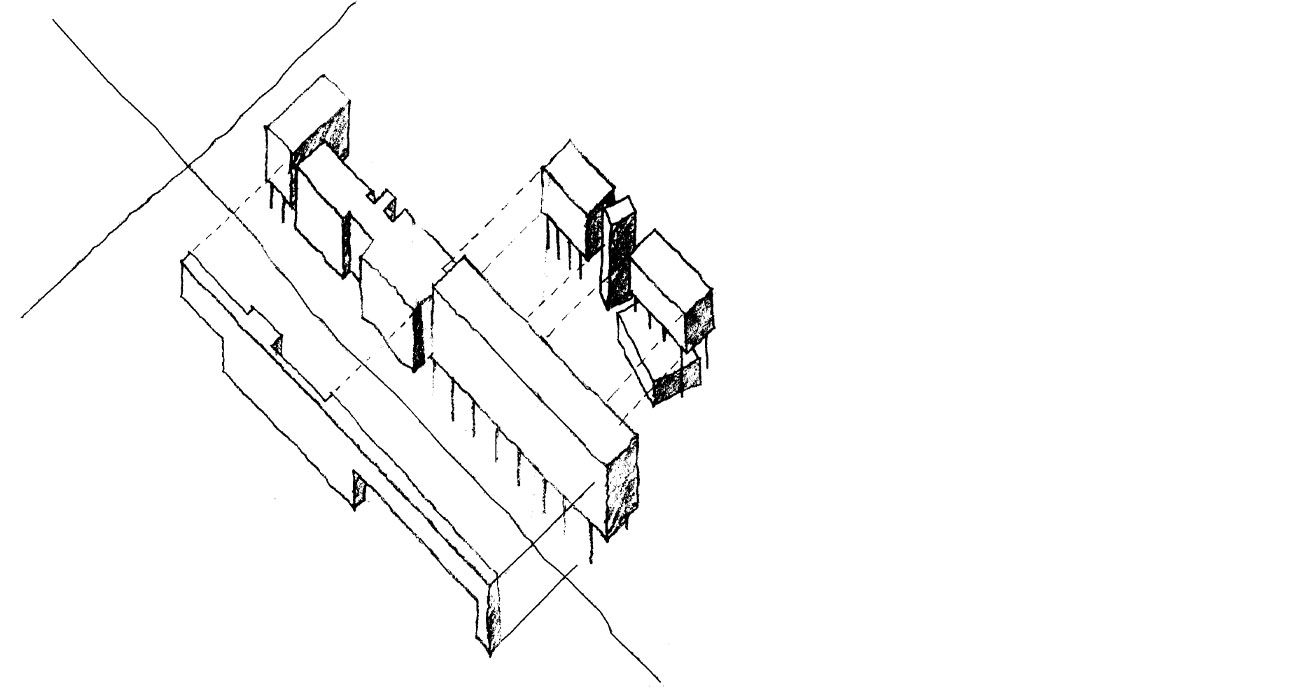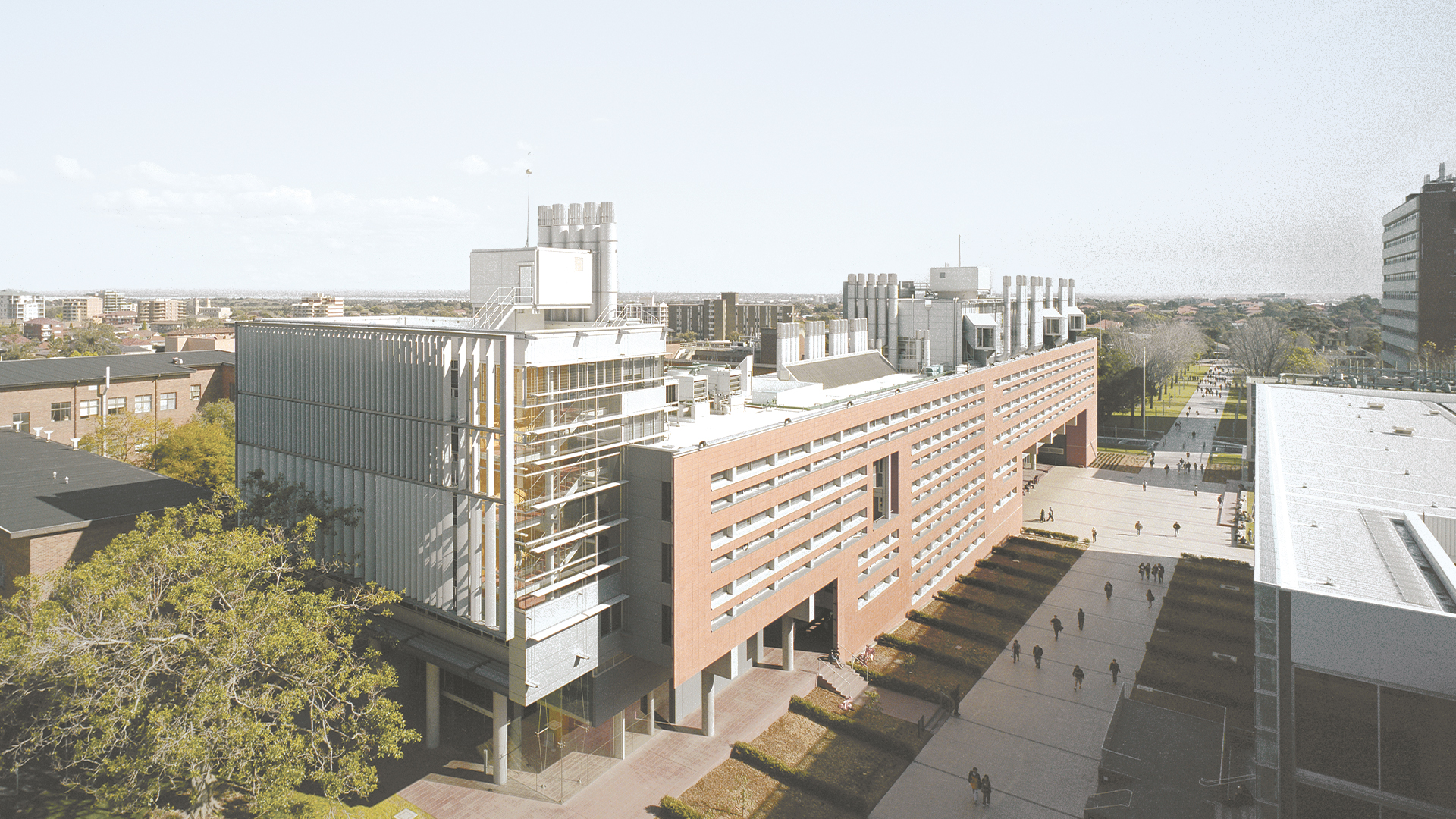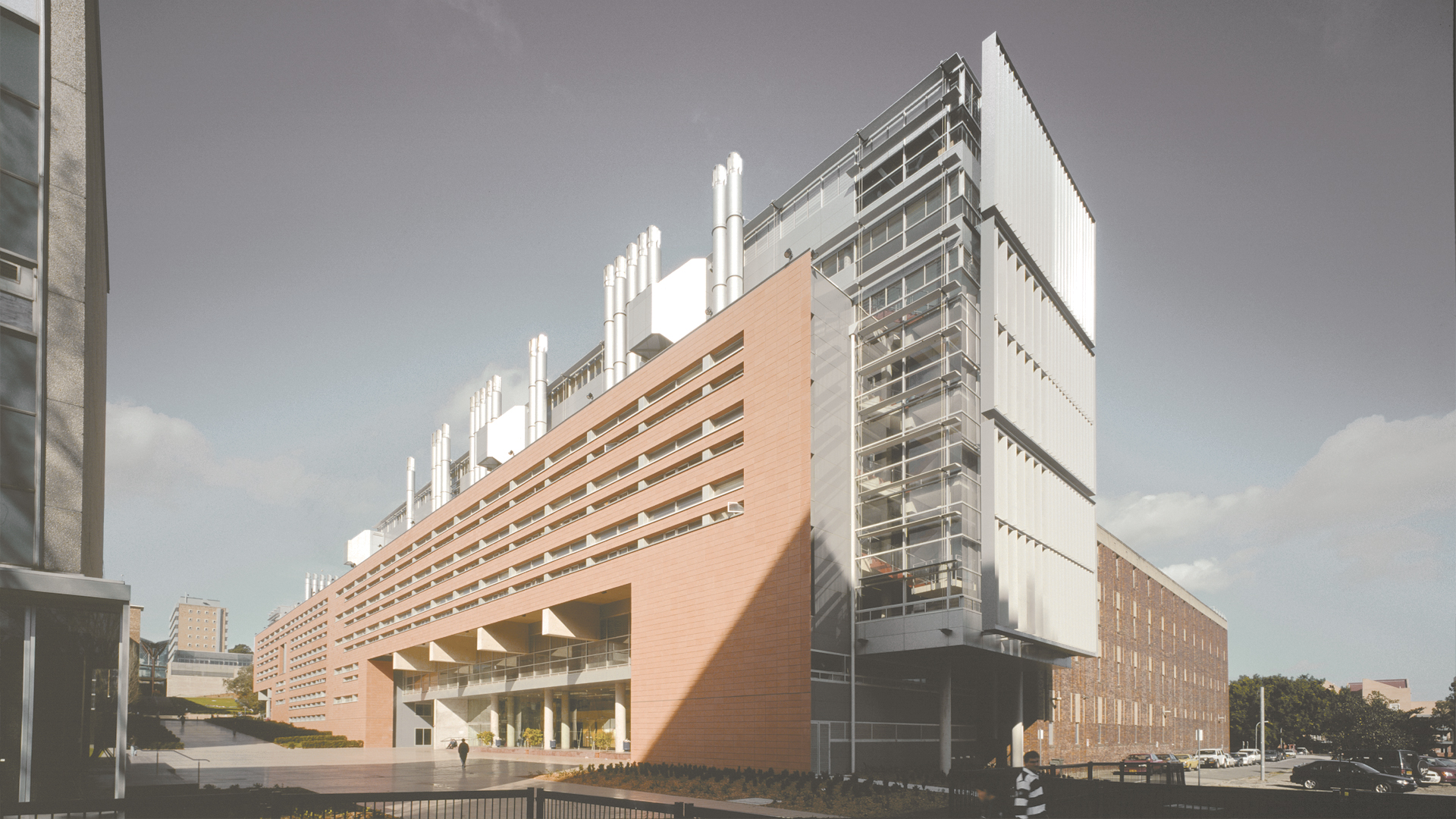

Red Centre

Red Centre

Behind this terracotta plane, the new building takes the form of two glass and metal volumes suspended on columns. The first volume sits opposite the main square and extends westward to reach down the mall and announce the presence of the square. The second volume located at the eastern end of the complex is turned through ninety degrees to define and characterise the second new square.
This composition of terracotta plane and recessed metal and glass volumes mediates the scale of the new building and complements the existing brick and curtain wall structures. To the south, the building takes a more fragmented form, responding to the courtyard, lane and service ways that provide only partial glimpses and lateral views.
Working closely with Arup, we developed a passive system of cooling, heating, ventilation and lighting. These passive environmental control systems are integral with the form, structure and representation of the building. For example, the independent terracotta plane that has such a significant urban and representational role is not merely a formal/symbolic strategy. The twin window design in a deep reveal was developed to simultaneously address environmental control and comfort. The twin openings provide even natural daylighting throughout the offices, with light penetrating deeply from the upper window and from the light shelf action of the reflective upper sill. The deeply set openings give appropriate sun shading and the twin opening design provides a carefully positioned window, able to be opened for views, with higher-Ievel fixed glass for daylight, between which is an integrated bookshelf. Air can be drawn into the room through the open window or louvres integrated in the upper sill, which also serve as trickle vents.
The Red Centre is a sustainable tour de force that challenged the environmental standards for Australian campus architecture.
Kenneth Frampton


fjcstudio acknowledges all Aboriginal and Torres Strait Islander peoples, the Traditional Custodians of the lands on which we work.
We recognise their continuing connection to Country and pay our respects to Elders past, present and emerging.
We extend this acknowledgement to Indigenous People globally, recognising their human rights and freedoms as articulated in the United Nations Declaration on the Rights of Indigenous Peoples.



